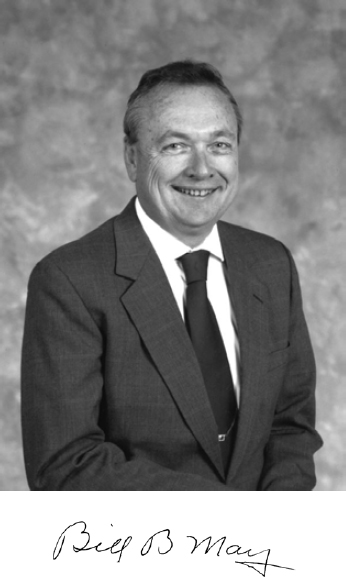man to the end with a penchant for DIY projects and gardening. They had two children, a son who became a doctor and a daughter who became a scientist. For the last two decades Ann was his constant companion and aide on his travels, and finally also his nurse during a long terminal illness.
Acknowledgments
We are indebted especially to Lady Marshall for permitting us access to her store of personal papers and to the UKAEA for permission to consult official archives. We also received valuable help from Mr. A.M. Allen, Professor Martin Blume, Dr. F.J.P. Clarke, Sir Alan Cottrell (FRS), Dr. Ken Currie, Mr. Michael Dawson, Professor Sir Roger Elliott (FRS), Dr. Brian Eyre (CBE), Sir Christopher Harding, Sir John Hill (FRS), Sir Peter Hirsch (FRS), Professor Alan B. Lidiard, Mr. Richard Lindley, Mr. Ivor Manley (CB), Dr. Chauncey Starr, Dr. B. Tomkins, Mr. Peter Vey, and Mr. Ed Wallis.
The frontispiece photograph, taken in June 1973, is reproduced with the kind permission of the Godfrey Argent Studio.

BILL B. MAY
1935–2016
Elected in 1988
“For outstanding accomplishments in pioneering and bringing to practice significant electronic surveillance technologies.”
BILL BRUCE MAY’S life is a prototypical American story. That is, it’s a story that could happen only in America.
He had humble origins. Born September 23, 1935, in Sturgis, South Dakota, to John and Weltha May, he grew up on a ranch outside the small town not far from Mount Rushmore. He attended a one-room grade school with 12 other students and one teacher, and at Sturgis High School he met the love of his life, Marka, who became his wife of 60 years.
After graduating from the South Dakota School of Mines and Technology, he went to Stanford University to get a PhD in electrical engineering. He and Marka took their young son to Los Altos, where they raised their family, which grew to three sons and a daughter.
While working on his PhD Bill joined the Stanford Electronics Lab (SEL). In his 11 years there he authored or coauthored nine significant technical publications. These included his dissertation, “A Wideband Frequency Discriminator Using Open and Shorted Stubs,” and two highly influential papers: “Radar Accuracy and Resolution in a Multiple-Signal Environment” (published in 1964 by the Defense Technical Information Center) and “A Statistical Analysis of Multichannel Systems with Application to Broadband Microwave Frequency Discriminators.”
At SEL Bill demonstrated that he had management talent as well as technical skills, and rose rapidly in the management structure. But during his last few years there the country was going through traumatic protests against the Vietnam War. A consequence of that turbulent era was a student sit-in in 1969 that effectively shut down SEL. This setback only challenged Bill: He led an exodus of seven of the best staff members of the defunct lab to create a new electronic warfare company, ARGOSystems, specializing in signal processing systems.
It was clear in the first year of ARGO that Bill and the gifted engineers he had taken with him would be successful. Indeed, the company achieved steady and profitable growth, and ultimately had more than 1,300 employees. This success was rewarded by a very strong public offering and then, in 1987, Boeing decided to diversify into the electronic warfare field by buying ARGO, keeping Bill as CEO of the newly merged company. At the time ARGOSystems was recognized as one of America’s leading electronic warfare companies and known for its integrity, financial stability, and professionalism, all a true reflection of Bill May.
Through those two transactions, Bill created significant value for the loyal employees who had helped develop the enterprise into the great company it had become. Bill stayed on for 5 more years, assisting Boeing in effecting a smooth transition of ARGO into the Boeing management structure.
After retirement he lent his management experience to several other companies by serving on their boards. He was especially dedicated to the Tech Museum of Innovation in San Jose, which he helped found.
In addition to election to the National Academy of Engineering, Bill’s honors included membership in Sigma Xi and Eta Kappa Nu, and selection for the Guy E. March Medal, awarded by his alma mater in South Dakota. For the NAE he served on the Program Committee and on the Electronics, Communication and Information Systems Engineering Peer Committee.




